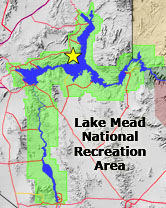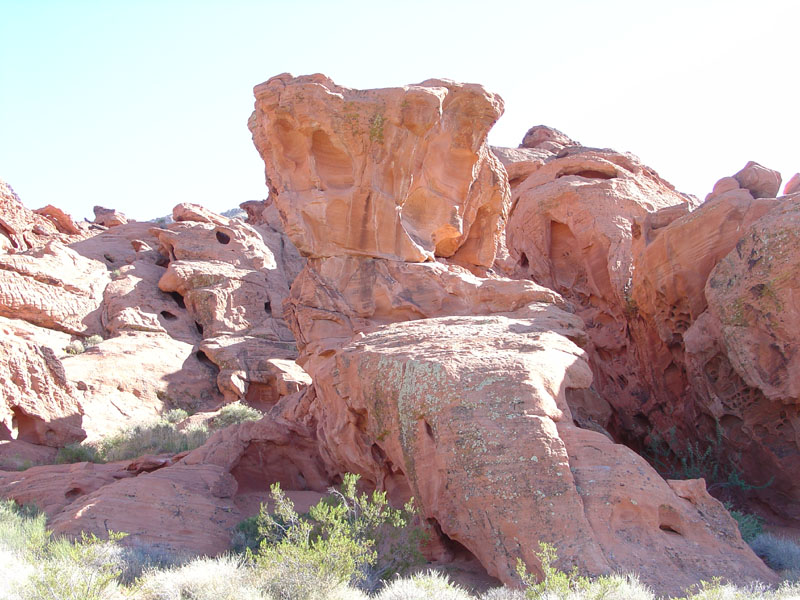 |
The Aztec Sandstone outcrops in the Redstone area display cavernous tafoni-style surface weathering. The pitted, often honey-comb shaped surfaces of outcrops form from the infrequent wetting and drying of the sandstone. Tafoni-style weathering features form slowly over time. During wet weather, precipitation soaks into the rock and dissolves mineral cements. Afterward, as the landscape dries this water migrates back to the rock's surface carrying the dissolved minerals. As the water evaporates the surface of the rock is hardened by the precipitation of additional minerals between the sand grains in the sandstone. Likewise, with the removal of cement from rock just below the surface, this internal material becomes softer and more friable. When the rock is eventually exposed the internal material weathers more quickly, leaving hollowed-out spaces in the rock. Daily heating and cooling, occasional freezing and thawing, wind, and biological activity also help to break down the sandstone and erode the sand away. Cavernous tafoni-style weathering is probably enhanced by the presence of salt in the arid environment (Turkington, 1998). |



